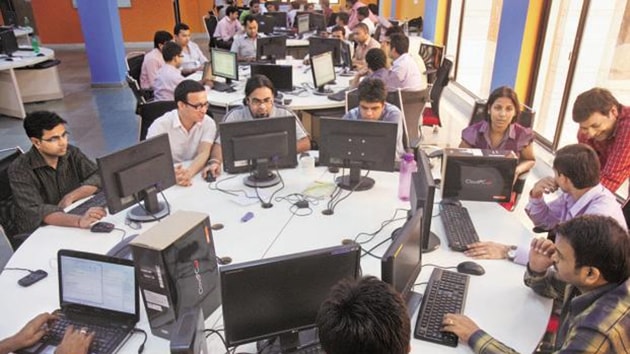Workforce to expand in size, more jobs needed: Economic Survey
The slowdown in fertility rate along with an increase in life expectancy is ageing the population – the share of working and older population is increasing while the share of younger population is declining.
India needs more jobs, more hospitals and fewer but better schools in the next two decades, according to the Economic Survey for 2018-19. This is because, the age-composition of its population will change significantly between now and 2041, the survey adds.

The slowdown in fertility rate along with an increase in life expectancy is ageing the population – the share of working and older population is increasing while the share of younger population is declining.
Also Read: Tax cuts, social sector push likely today in Modi govt’s budget today
According to the 2011 Census, 41% Indians were under the age of 19. The survey estimates that just 25% of the population will be in this age group by 2041. This means a drop in absolute numbers of around 114 million people. At the same time, the number of people over the age of 60 is estimated to increase by 135 million while the number of people in the working-age group (20 to 59 year old) is projected to go up by 278 million (see chart).

This change in the age composition of the population comes with certain implications.
First, the growth in the working-age population means the country will need to create more jobs. “Depending on the trajectory of labour force participation during 2021-41, additional jobs will need to be created to keep pace with the projected annual increase in working-age population…,” the survey reads.
Also Read: Charting road map for faster growth
Second, the ageing population will lead to a greater need of health care facilities in the country. The survey estimates that if India’s hospital facilities remain at current levels, the rising population over the next two decades will sharply reduce the availability of hospital beds – from nearly 500 beds per million population in 2016 to less than 425 in 2041.
Third, as the size of population in the school-going age set to drop, the country requires greater focus on the quality of education than on increasing the number of schools.
According to the survey, population in the age group of 5-14 years (which roughly corresponds to the number of elementary school-going children) has already begun declining across all major states except Jammu and Kashmir.
Population projections suggest that these trends will continue through 2041. “Contrary to popular perception, many states need to pay greater attention to consolidating/merging schools to make them viable rather than building new ones,” the survey suggests.
In 2016, there were about 6,000 schools in India per million children in the 5-14 year age group. According to the survey, even if no new school is added, there will be more than 1,500 additional schools per million children by 2041.






